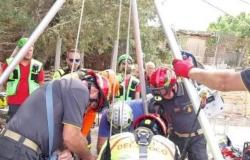NASA, in collaboration with the Federal Emergency Management Agency, FEMA, and the planetary defense community, completed the fifth interagency planetary defense exercise, with the goal of evaluating and improving the nation’s ability to effectively respond to potential asteroid threats or comets. This two-year exercise involved representatives from various government agencies and international collaborators, providing valuable information to address hypothetical impact scenarios.
The exercise, organized by NASA’s Planetary Defense Coordination Office, with assistance from the US State Department’s Bureau of Space Affairs, was designed to explore risks, response options and opportunities of collaboration in the event of a threat from an asteroid.
While there are no immediate threats of asteroid impacts, these exercises are critical to preparing for any future emergencies, considering scenarios ranging from minor regional damage to global catastrophes predicted decades in advance.
During the exercise, participants examined a hypothetical situation in which a previously undetected asteroid had a 72 percent chance of hitting Earth within 14 years.
Preliminary observations were insufficient to accurately determine the asteroid’s size, composition and long-term trajectory, further complicating the scenario.
Furthermore, follow-up observations were delayed by seven months due to the asteroid’s passage behind the Sun, making management of the available time even more critical.
The exercise brought together nearly 100 representatives from various U.S. government agencies and international collaborators, held at the Johns Hopkins Applied Physics Laboratory (APL) in Laurel, Maryland.
FEMA’s Leviticus “LA” Lewis emphasized the importance of interagency preparedness and coordination to effectively address a potential asteroid impact threat.
TECHNICAL NEWS
For the first time, the exercise used data from NASA’s Double Asteroid Redirection Test (DART) mission.
The DART mission, which impacted the lunar asteroid Dimorphos on September 26, 2022, demonstrated that a kinetic impactor could change the trajectory of an asteroid, providing valuable technology for planetary defense.
To improve its ability to detect and characterize near-Earth objects, NASA is developing the NEO Surveyor, an infrared space telescope designed to discover potential threats years in advance. The NEO Surveyor is scheduled to launch in June 2028.
NASA will release a comprehensive after-action report that will include strengths, identified gaps, and recommendations to further improve planetary defense preparedness.
These findings will guide future exercises and studies, ensuring that NASA and other agencies continue to improve capabilities to respond to potential asteroid threats.
Pictured, Representatives from NASA, FEMA, and the planetary defense community participate in the fifth interagency planetary defense exercise to inform and assess our ability as a nation to effectively respond to the threat of a potentially hazardous asteroid or comet.
Credit: NASA/JHU-APL/Ed Whitman





